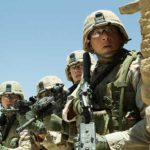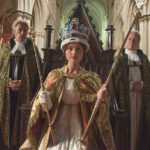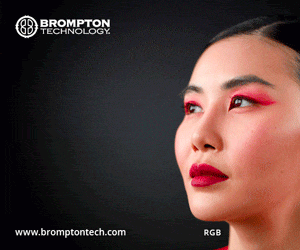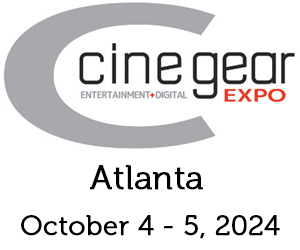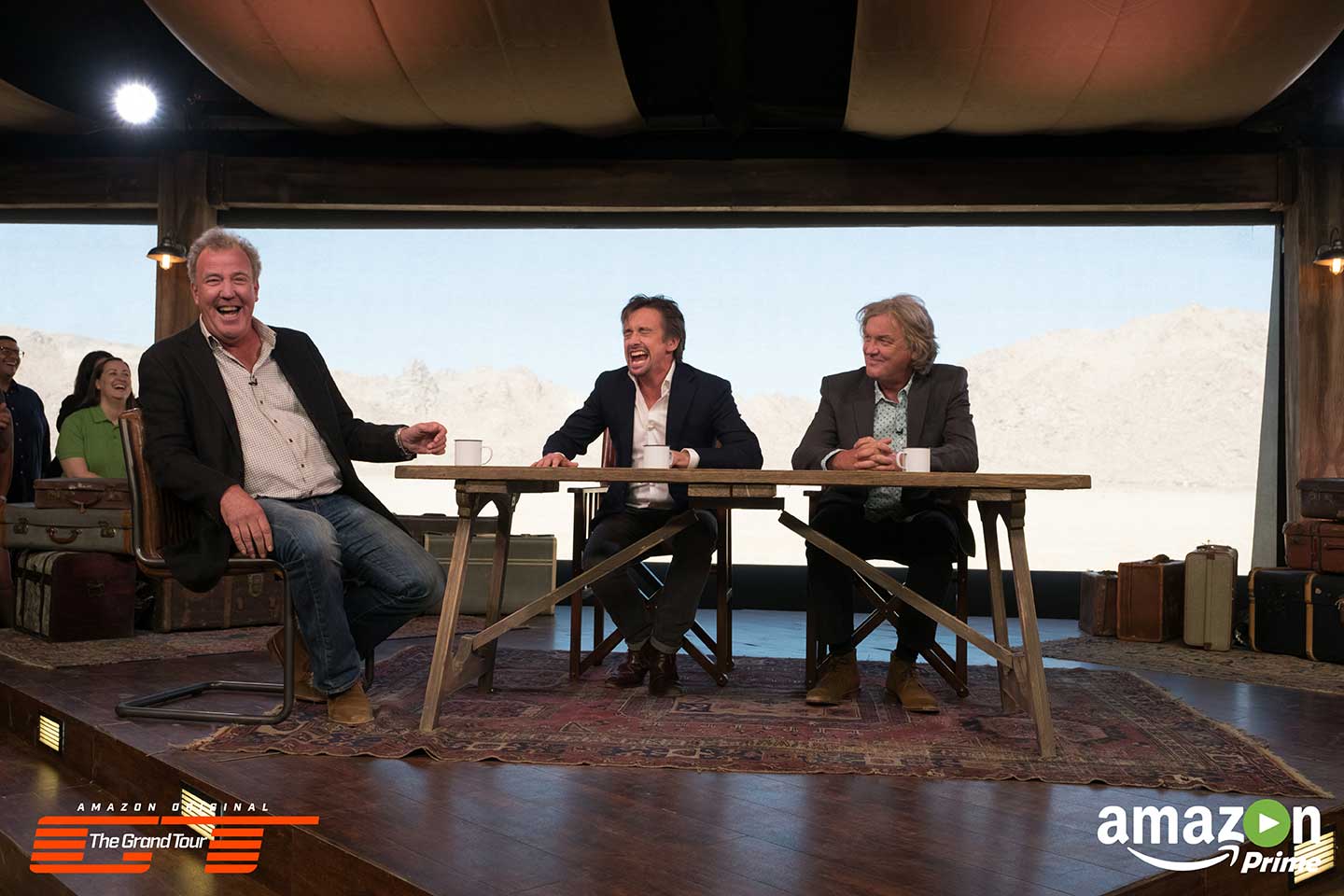
Enter The Grand Tour
Posted on Jan 4, 2017 by Julian Mitchell
In an exclusive article, head DOP Ben Joiner explains what has changed and why in shooting Amazon’s The Grand Tour
We all know the history and what happened next, but the result has been revealed in Amazon’s new show, The Grand Tour. We look behind the scenes.
“I started working on the other show in 2002, myself, Casper Leaver and Toby Wilkinson were the original three cameramen on it. It was to become an event show but we didn’t know that back then, the first forays were very lo-fi with a very small crew with instructions to go out and make something cool. I was shooting music videos at the time in Super 16. We just ended up applying a sort of music video feel to that show and it kind of worked from a look point of view. It stuck and here I am 14 years later.
“I went on to do a load of commercials and a couple of little dramas and came back to The Grand Tour very refreshed. When we did our first shoot in Portugal way back in October last year I stood trackside at Portimão race track and this very powerful Porsche 918 car zipped past me. I was on a new camera with new lenses and completely missed the shot! I’d sort of forgotten how to shoot cars in the eight months I’d had off from shooting cars. I’d forgotten how bloody fast they were. I remember having that moment looking at my camera assistant and thinking I’m going to have to get my eye back in here!
“I remember a very early meeting in August last year where we sat down in this temporary office that Chump Productions rented in London with all these technical gurus from Amazon Video. They were saying, ‘We want to shoot HDR, we want to shoot 60fps for everything’ and we just looked at each other across the table thinking we probably could do that. It would be a big step up but it would also mean a huge amount of data. They were really serious about that and talking about uploading our rushes from all the various locations we go to in the world.
“It was very funny as Andy Wilman, the big boss, was a 4K novice at that point, he’s now a 4K master. Through the last ten months he’s really got to the bottom of just how difficult it is to shoot a show of this scale that generates this much data and then master it all in 4K. It’s been a huge step up for everyone but I think we’ve done pretty well overall actually; it’s going to look stunning.”
 Camera, sound and DIT crew on location for The Grand Tour season one.
Camera, sound and DIT crew on location for The Grand Tour season one.
New Show, Old Crew
When they started filming The Grand Tour there was a real desire to retain the key players from the old crew. Part of that was they realised that the crew did have quite a strong relationship with the presenters. “The way we work when we’re on location is very much a situation where a set-up or a scenario is facilitated. There’s always an idea and always a theme or a goal for what we’re trying to achieve from a scene but it’s a very malleable thing. Often it will develop as the scene goes on as something will happen with a car, something will catch fire, Jeremy will do something or tease one of the other guys who will then start an argument. I think the key thing is that everyone on the crew currently – the key camera operators, camera assistants, minicams and sound recordists – has been with the show for more than five years. So there is a kind of fluency there and you can pretty much put us anywhere in the world and it’s seamless when it’s working well. We can just film stuff and there is an intuition about what the presenters might do or how they might behave in a certain scenario which means we can just roll and capture their spontaneity. The downside of that is when it’s not working so well it falls apart massively but creativity can come from that type of scenario too. Which is good as well.
“We have always referred to ourselves as the dysfunctional family and there are arguments occasionally – being on the road in, say, West Africa for three weeks in the dust and the heat is going to lead to tensions. But there is a real camaraderie in that crew. What was lovely about moving up to 4K was that we managed to bring in Joe Jamieson and his DIT crew from the commercials that I do. This was a real breath of fresh air and a security blanket for me because they built these really lovely bespoke DIT workstations that were all housed in ‘cooled’ Peli cases. That meant we could review rushes on location which is something we never did on the old show. We’d get Dropboxes with frame grabs every day which let the directors keep up with scenes that they’d shot and just get an idea of how they’re looking, because quite often the directors work fairly blind on this show. It’s something that they maybe don’t like but have become used to because to keep up with the presenters you have to work at such a pace that we can’t always offer monitoring. So the directors rely very much on the crew’s instinct for framing and scene coverage. Also, on the sound guys, the ability to record audio in demanding environments means they are top notch and again have very bespoke kits and equipment for what they do.”
 Joe Jamieson, the main DIT for the show.
Joe Jamieson, the main DIT for the show.
DIT Initiation
With the torrent of 4K data on the show it was agreed to bring in a DIT crew which was one of Ben’s contacts from his commercial work. “One of the first things I spoke to DIT Joe Jamieson about was how he was used to having a cart in a studio or in one place on commercials. I told him that it was very much a case of bringing a crash helmet and staying awake because you’re going to be bombarded, especially in 4K with the cards coming in. We did a four or five-day shoot in Morocco earlier this year where we shot 19TB of data! That was across three ARRI AMIRA channels but the really demanding thing for the DITs is dealing with the minicams. We’re running mainly Panasonic GH4 cameras in the star cars and there are three per car. Those generate colossal amounts of data so I think Joe had a similar feeling to me and Casper after the end of the first shoot. It was a huge step up. They made these Peli-housed DIT workstations and the way we navigate the data is that we have a general rule of thumb: if it’s a one-presenter film you have one DIT, two presenters – two, and three presenters – three. So on the bigger films we’ve had three DITs on location with us. I have to thank Chump Productions for sticking by us with that.
“By and large the workflow on location has been pretty seamless. We were all quite daunted by the step up from shooting on the Sony F800s on XDCAM which we used to shoot on. From having the ease of just popping a disc at the end of the day and then saying, ‘There you go, guys, that’s your film’ to having these 4K ARRI Log-C rushes is a huge difference. We would just keep running and running because you never knew quite what would happen. I think on this one we have been, certainly mid-season I remember an email getting fired out that said, ‘Can we just think about when you press the ‘GO’ button?’ and ‘Can you do short runs?’. We all did our best but we often genuinely don’t know what the presenters are going to do next. Very often the presenters will just give me a little nod or sort of point with their eyes to something that’s going on. I might not even have the camera on my shoulder at that point, but the crew very quickly mobilise when they get a sense that something is happening.”
 The ARRI Amira camera channel.
The ARRI Amira camera channel.
Camera Testing
Out of that initial meeting with Amazon about tech specs Ben did quite a lot of testing of different camera and formats. “We looked at the Sony F55, RED EPICs and we even looked at Canon EOS C500s at the time to see if there was a way of making the cameras lighter and more flexible. I really wanted to shoot with the AMIRA from the get-go because I like the sensor and I like the look of it. Also I use ALEXAs as my camera of choice when I do commercials so I was keen to bring that look into the show. The thing I really loved about the AMIRA was that it gave us the little flip-out screen on the side and the access to the menus and user buttons – a very fast way of keeping up with the performance of the presenters. The camera operators are self-sufficient and all are DOPs in their own right. That’s another thing that’s really nice – I’m the director of photography on the show by title but every other guy that’s operating a camera on there has got 20 plus years of experience of lighting and shooting so we’re fairly interchangeable. During a shoot we’ll all often get tasked to go off and do our own scene with a presenter so again the director on a given shoot might not see 30% of what gets filmed first-hand. You’ll go off with the presenter and almost self-direct or if you’re with Jeremy you’ll be directed!
“We tested the F55 CBK55 module, which puts certain key functions on switches and turns the F55 in to more of an ENG-style camera. I think in the end, for me, it was all about the look really, I preferred the look of the AMIRA sensor and the speed with which you can go to 200fps at 2K and dial-in offset white-balances. Things like that in the end made the AMIRA the choice.
“The punishment the AMIRAs took was immense. I did some reading up about the movie Mad Max as that was shot in West Africa as well. I was quite daunted by the horror stories that they came back with. I think they had 13 ALEXAs on set and at any one time two of them were being dismantled. We were going for three weeks in similar environments and all we were taking was a spare AMIRA body.
“The fact that it was still working after that punishment was really impressive and I have to say at that point I was kind of glad we weren’t on Sony F55s or other cameras. There’s nothing wrong with those cameras. I just think for this type of show you’ve got to go with something that is as bombproof as you can make it. That’s why I loved the Sony F800 we used to use, because it was bombproof.”
 The ‘workhorse’ ARRI Amira with one of the Canon lenses favoured by Ben Joiner.
The ‘workhorse’ ARRI Amira with one of the Canon lenses favoured by Ben Joiner.
Setting The Look
The authorship of the look of this new show was like a clean slate. Ben was very keen to try and take The Grand Tour forward and not really to completely reinvent the look because the look was always one of the strong things about the old show. “But I think it was a chance to evolve what we were doing visually. Maybe I’m getting older or my eye as a DOP is getting a bit subtler with age but I feel on this show we’ve stepped back a little bit from the heavy grads, for example, that we used to use on the old show. Part of that has been led by the fact that the AMIRA has great latitude and highlight handling. That has given us the ability to be a bit subtler with the imagery and a bit more honest with what is happening in front of the camera rather than trying to create these ‘skies of doom’ as we used to call them.
“I’ve been keen to have it look a little more real. There will still be very strong grades applied to the footage because it is a key thing, particularly on the power test and track-based films, to have a very strong look. But on the three-header films I think we’re going for something that is a bit more authentic and a bit more character driven and about the guys. For me, that needs to look a little bit more real.
“We have a standard package of lenses that includes the Canon CN7 which has been the workhorse. We also used the Duclos 11-16 and the Canon CN20 super telephoto with the doubler so 1000mm. You can do some pretty crazy stuff with that with a full-frame sensor. We’ve used a lot of nice stuff as well like a Morpheus 80-200mm lens that camera operator Casper Leaver owns. We’ve used that on a lot of the more ‘drama-y’ type films that we’ve done and there have been a few of those. There was one film where we had to make a sort of TV commercial within a three-header film. We shot that all on the Morpheus as it’s got a nice, soft creamy kind of look. It was a lens that was made for, I think, Casino Royale. I think True Lens Service made six of them for the film. It’s an old Nikon stills lens that’s been rehoused. We also shot a film pretty much all on ARRI Superspeeds.
“I’m not one of those DOPs that will have everything waiting on the truck just in case. One of the key things when you’re travelling abroad or on a big convoy like we do is to keep it light and simple. There’s no point in having a set of Leica Summiluxes if you’re only going to use them for one shot. I’d rather have the CN20 there for all the days of a shoot so I can use it if there’s this beautiful long lens shot that I need. So I would take a zoom over a prime most days, but there have also been shoots where we have just shot on primes because we’ve either had the time to do that or the story and script lent themselves at that time.
“Using kit like the CN7 and using shallow depth-of-field allows us to harvest the bulk of standard shots that tell the story of a car moving fast on a track or whatever. There is also a new type of storytelling you can do with a shallower depth-of-field. There’s a lot of comedy in this new series that relied on being able to pull focus much more definitely between a foreground and a background and then isolate story elements for the viewer which we couldn’t do on 2/3in cameras, because you couldn’t isolate people visually.
“We also pull all our own focus on the show so again going back to Portimão in Portugal, there was this moment where you’ve got a Porsche 918 going by at nearly 200mph and trying to keep that in focus is tricky. Again, it’s weird how your brain adapts and after a couple of shoots everyone had their eye in. We do shots that if you had a focus puller there you’d probably get them on the second or third take. But pulling by feel is the only way to make our schedules; you don’t get time for marks, you have to choose your shots and on the next lap around the track it’s something different. Then maybe do a messy, handheld, shaky-cam shot. So you harvest a lot of stuff in a short space of time. There are however certain stock shots you know you have to get to convey that kind of speed and the dynamics of a car. I guess you go for your bankers first and then if you can blend some kind of art or a sun flare or some kind of elemental thing into a shot on the next pass you’ll go for that.”
 The famous ‘trio’ of hypercars take a break from the first Episode of The Grand Tour.
The famous ‘trio’ of hypercars take a break from the first Episode of The Grand Tour.
Shooting Plans
“There’s no real plan for these things. It’s very much up to the camera operators to express themselves which is fantastic. It’s the best job in the world at that point. That goes for the old show as well. I didn’t watch the new series of Top Gear on purpose because I didn’t want to be able to have an opinion on it. All of my mates still work on the show, a lot of the camera assistants that were there when I was working on it are now shooting it. The one thing that kept coming back from what I heard about that show was how good it looked. I have to say that has been in the back of my mind over the last six months.
“I wanted to come to The Grand Tour with fresh eyes on it and do something a little bit more natural, a little bit more consistent in terms of look. For example we’ve been shooting pretty regimented frame rates and shutter speeds again just to try and give it this subtle visual consistency across the series. Our base frame rate is 23.976, which in itself has caused some interesting issues, particularly when you’re shooting screens in cars or just the headlights. We had a scenario on the start line in Portimão with a Ferrari, McLaren and Porsche all with LED running lights. It was a track-based film so we were shooting with higher shutter rates to make the image crisp and make the cars look really sharp and dynamic. We had this scenario where the Porsche was fine at almost any shutter rate. We were dialling in the McLaren to try and find what would clean up the headlights, and so you would clean up the headlights on the Ferrari and the McLaren would be doing its own thing, pulsing like crazy. It was very difficult to clean up all the lights. Things like that are quite annoying from a visual point of view, then you have to go with the point in the middle where they all look OK. I think that’s where the 23.976 shooting in Europe combined with certain shutter speeds is one of those things. Going forwards we are going to have to work out a bit more with Amazon to see if there is any flexibility in that. That’s all part of the learning curve we have all gone through this year.
“We had an incident where I think I was shooting at the equivalent of 1/1000sec, something we used to often do on the old show, on wheel spinning or gravel getting flicked up or stuff like that. With 4K and very high shutter speeds we found that we were getting an image that was almost too crisp. So it was very jarring and had a kind of staccato, percussive look that wasn’t really what we were trying to do with this new series.
“4K is a huge amount of resolution and is kind of scary. The jump up to 4K was an interesting thing just from a data management point of view. It’s a huge amount of data. The way we shoot things we would try to go a bit subtler on grads and a bit slower on shutter speeds to try not to bombard the viewer with the coarseness that you can get from a 4K image. So yes we’re future-proofing the show with the maximum resolution that we can sustain at the moment, but with that there is a responsibility to the script and the story. You can go too far. Where it is nice is that with certain shots we can do little digital zooms in post and not really affect the resolution too much. We shot a film in Jordan earlier this year that was a bit of a departure for us. It involved a lot of logistics and explosions and chase sequences that were very demanding on the presenters. The 4K was fantastic because it gave us an opportunity to do something really cinematic; it’s going to have a very strong grade on it and it was shot very much like you would do a traditional drama with marks and focus pulls. It’s probably the film in the series that I’m most looking forward to seeing what the reaction is from the audience. I can’t tell too much more about it but I think the 4K will really sing and people will think, ‘Well, I wasn’t expecting that!’”
 DOP Ben Joiner and Supervisor sound editor Russell Edwards.
DOP Ben Joiner and Supervisor sound editor Russell Edwards.
633 Squadron
Sound supervisor Russell Edwards has the task of capturing the sound on The Grand Tour. Another ‘old boy’ from the old show, Russell has over the years devised a highly redundant system for every eventuality based on Sound Devices 633 recorders.
“Some days you can turn up and it can be just one presenter doing something in a room and that’s quite straightforward, but, for example, for the three-header specials it becomes a big project sound-wise because there will be three sound operatives working with at least three principal cameras. There’s always a fourth and fifth like a Russian Arm or another camera with an extra camera person.
“When we’re mobile we obviously put radio mics on our presenters and put hard drive recorders which record everything they say from the moment we put them on in the morning until the time we take them off them in the evening. They’re a backup but get used a lot in the edit because we do have RF gaps.
“We use Wisycom transmitters because we found that Audio Limited transmitters were beautiful sounding but because of the number of countries we go to a year, about 15, we needed more frequencies. The number of frequencies out there now are unbelievable. In Italy or Spain there is little or no control over RF so you could be picking up anything from a radio station to a taxi firm.
“With Wisycom you’ve got a massive frequency range so we’ve gone from being able to use about 30 frequencies to hundreds, possibly thousands. So we put a Wisycom transmitter on the presenters and these batteries last for 14 hours so we don’t have to touch them again all day. So we also put in this hard drive device called a Zaxcom ZFR which runs on an SD card and that powers up for 14 hours a day so we don’t need to touch that either.
“What marries all of this up is time code. In the morning that’s our first thing to do. Time of day time code helps the post understand what was filmed at what time because sometimes you don’t have time to indent shots or perhaps don’t understand what is going on with the narrative, so time code is the master.
“When we do normal stuff like in a market square, which was the start to one of the specials where they get given the challenge, we’ve got a radio mic on all three of them and this hard drive recorder, and we record all of that on to our own Sound Devices 633 hard drive recorder. We record that in time of day time code, isolate all of their tracks – if we have guests we just put another radio mic on them – and then we bounce and mix over to the cameras so they’ve got a two-track mix which the editors use maybe 70% of the time. We use the Zaxcom ‘camera hop’ so the AMIRAs can receive the audio, then post have it for a guide but they generally use it a lot because it’s such a clean track of our presenters.
“The only times that they might not use it is if there has been an RF break-up, the cameraman is miles away from the sound recordist, which does happen when we travel, and during the day things get mixed up, so different cameramen are with different sound recordists. That’s when they need to go to the hard drive, where the isolated tracks are a lot cleaner. So if you’ve got three of the guys, say, in a market square then you’re bringing up all three of them in your mix. You’ve got all three talking and you don’t know what they’re going to say and when so you can’t fade them up and down, you have to leave them all up.
“So if you’ve got all that background noise, the hubbub of a city behind them and all three of them talking as they do, then they might decide to go to the ISO tracks in post because they’ll be a lot cleaner. You’ve only got Jeremy on one track, for instance, not all of them. You can’t just use the Zaxcoms on their own because you’ll never be able to hear them as they’re an independent machine – they don’t transmit anything. So you wouldn’t know if the mic has fallen off, or if the battery has failed, or if they’ve pulled the microphone off when they’ve got in or out of the car. They’re just a backup. So you have one transmitter with a Sanken COS-11 microphone on – we did think about using DPA mics but they’re just not hardy enough – then we have a separate microphone that goes to the Zaxcom hard drive.
“We also have effects mics, usually the DPA 4062, on the exhaust so post can use them to give the sound some more oomph and atmosphere when the shot’s being used. We also put a DPA 4061 in the engine bay, especially for muscle cars and those with nice-sounding exhausts. These mics are also very helpful for the filming or when using Russian Arms as it’s quite hard to mic those up. At 60mph it’s very windy. Post have then got the option of those effects mics.
“Over the years we’ve discovered the ways to make it so we don’t have to harass and bother the presenters too much, so we use a Rycote system and an overcover but we tape it up in a better way. If it’s hot we then have to pin them on, it’s all down to experience and getting those little things so we don’t have to stop the roadshow too much. We give that hard drive at the end of the day to Joe Jamieson, the show’s main DIT.”



